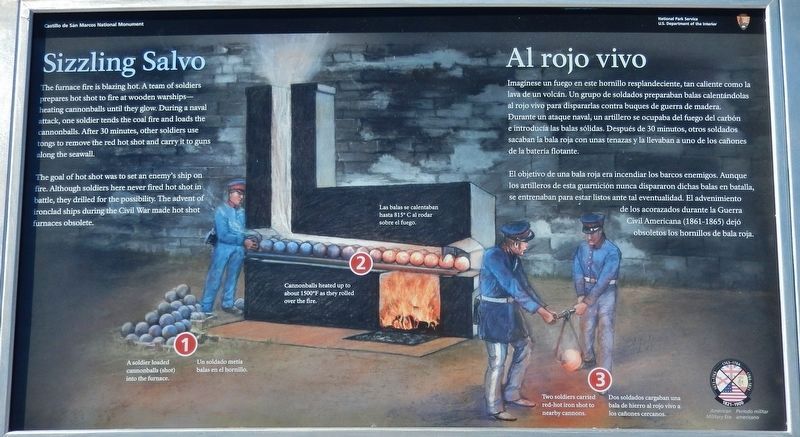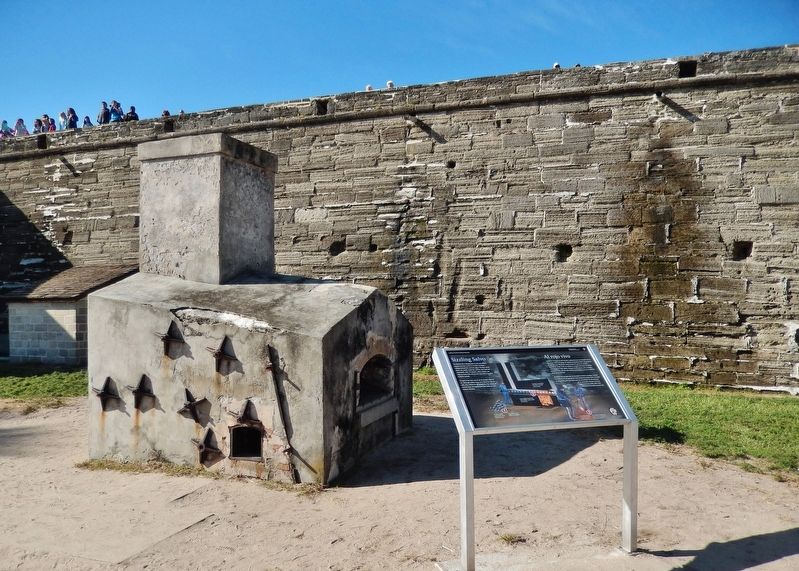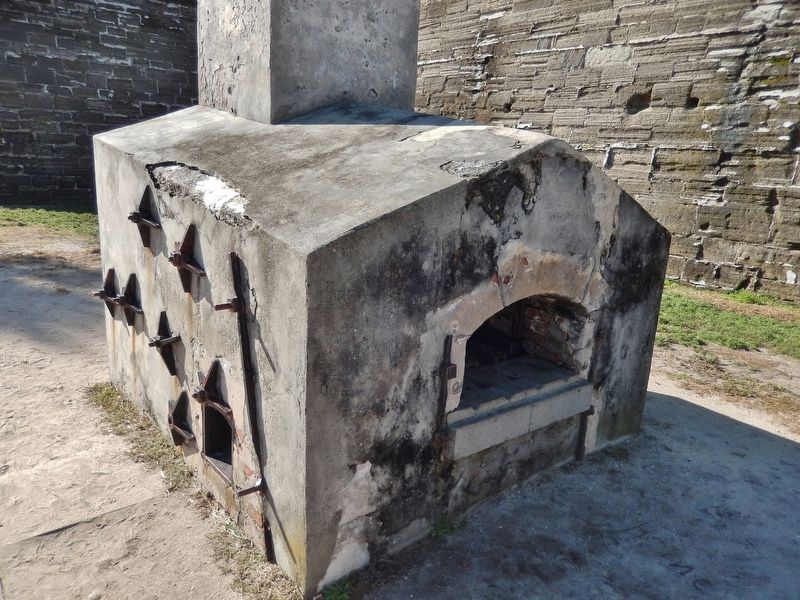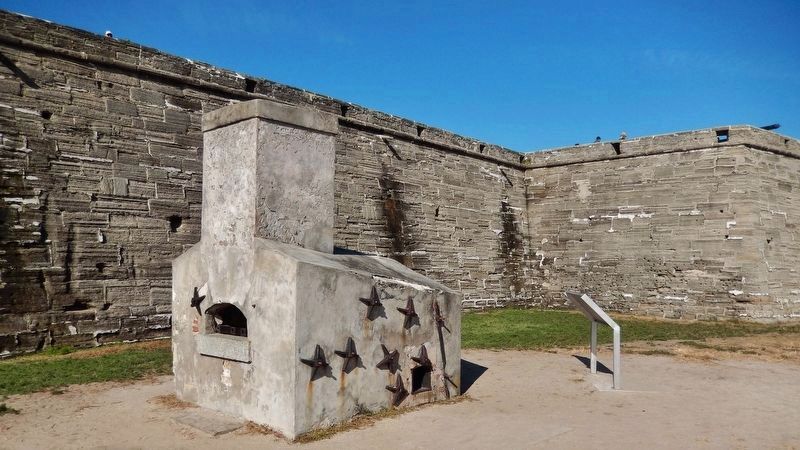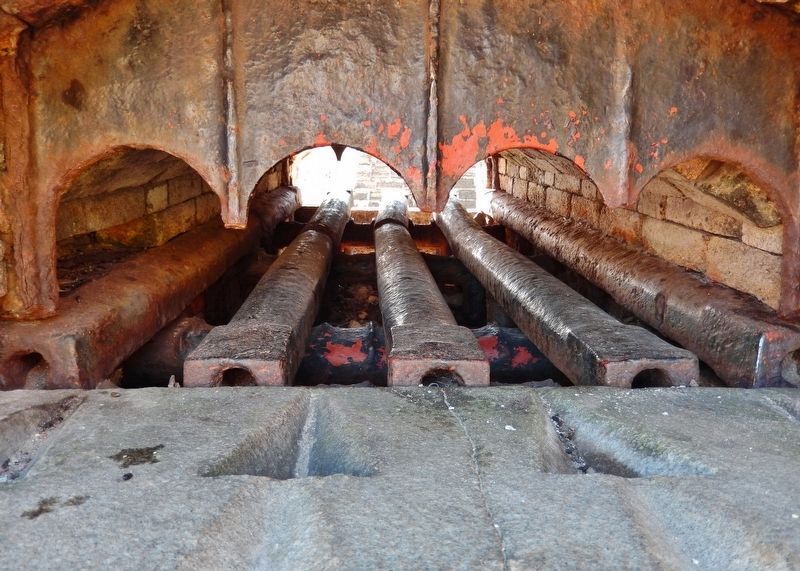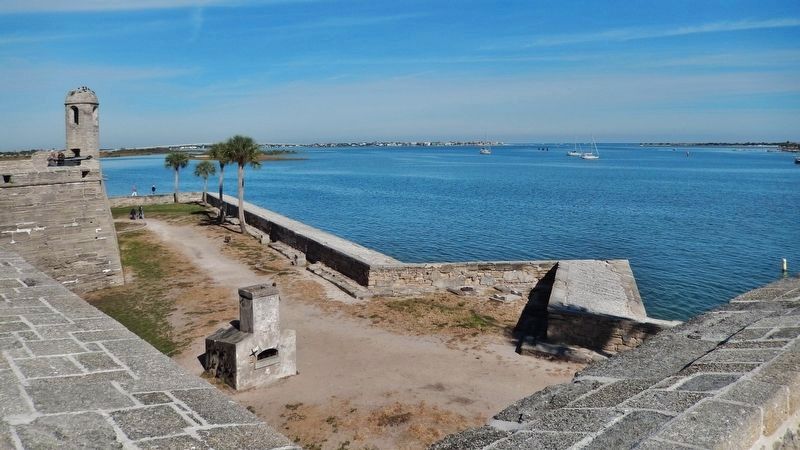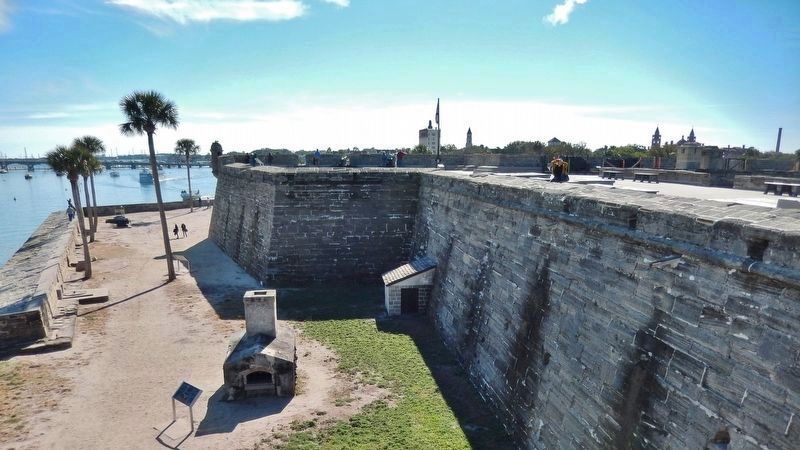St. Augustine in St. Johns County, Florida — The American South (South Atlantic)
Sizzling Salvo / Al rojo vivo
Castillo de San Marcos National Monument
The goal of hot shot was to set an enemy's ship on fire. Although soldiers here never fired hot shot in battle, they drilled for the possibility. The advent of ironclad ships during the Civil War made hot shot furnaces obsolete.
El objetivo de una bala roja era incendiar los barcos enemigos. Aunque los artilleros de esta guarnición nunca dispararon dichas balas en batalla, se entrenaban para estar listos ante tal eventualidad. El advenimiento de los acorazados durante la Guerra Civil Americana (1861-1865) dejó obsoletos los hornillos de bala roja.
Erected 2018 by National Park Service, U.S. Department of the Interior.
Topics. This historical marker is listed in these topic lists: Colonial Era • Forts and Castles • Waterways & Vessels.
Location. 29° 53.875′ N, 81° 18.665′ W. Marker is in St. Augustine, Florida, in St. Johns County. Marker can be reached from the intersection of South Castillo Drive (State Road A1A) (Business U.S. 1) and Cuna Street, on the right when traveling north. Marker is located on the Castillo de San Marcos National Monument grounds, on the east side of the fort, beside the subject shot furnace. Touch for map. Marker is at or near this postal address: 1 South Castillo Drive, Saint Augustine FL 32084, United States of America. Touch for directions.
Other nearby markers. At least 8 other markers are within walking distance of this marker. 1740 Siege (a few steps from this marker); Cannon (a few steps from this marker); Matanzas Bay (a few steps from this marker); St. Charles Bastion (a few steps from
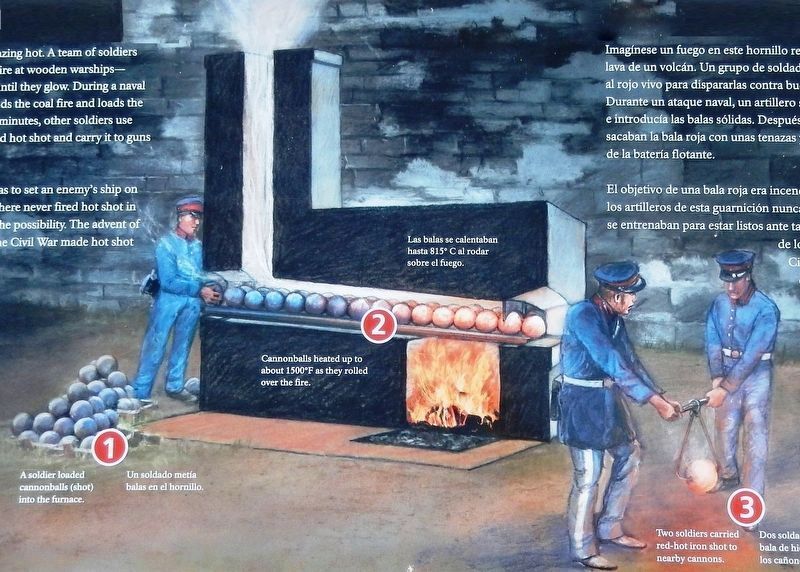
2. Marker detail: Shot furnace
1 • A soldier loaded cannonballs (shot) into the furnace.
Un soldado metía balas en el hornillo.
2 • Cannonballs heated up to about 1500° F as they rolled over the fire.
Las balas se calentaban hasta 815° C al rodar sobre el fuego.
3 • Two soldiers carried red-hot iron shot to nearby cannons.
Dos soldados cargaban una bala de hierro al rojo vivo a los cañones cercanos.
Un soldado metía balas en el hornillo.
2 • Cannonballs heated up to about 1500° F as they rolled over the fire.
Las balas se calentaban hasta 815° C al rodar sobre el fuego.
3 • Two soldiers carried red-hot iron shot to nearby cannons.
Dos soldados cargaban una bala de hierro al rojo vivo a los cañones cercanos.
More about this marker. Marker is a large rectangular composite plaque, mounted horizontally on waist-high metal posts.
Related markers. Click here for a list of markers that are related to this marker. Castillo de San Marcos National Monument
Also see . . . National Park Service Guide to Castillo de San Marcos National Monument. The U.S. Army filled in the east side of the moat in 1842–44 and mounted sea coast artillery pieces along the seawall. The shot furnace heated cannonballs until red hot. This hot shot could then be fired at an enemy’s wooden ships to set them afire. (Submitted on December 15, 2018, by Cosmos Mariner of Cape Canaveral, Florida.)
Credits. This page was last revised on August 20, 2020. It was originally submitted on December 14, 2018, by Cosmos Mariner of Cape Canaveral, Florida. This page has been viewed 535 times since then and 41 times this year. Last updated on December 23, 2018, by Cosmos Mariner of Cape Canaveral, Florida. Photos: 1. submitted on December 14, 2018, by Cosmos Mariner of Cape Canaveral, Florida. 2, 3, 4, 5, 6, 7, 8, 9. submitted on December 15, 2018, by Cosmos Mariner of Cape Canaveral, Florida. • Andrew Ruppenstein was the editor who published this page.
